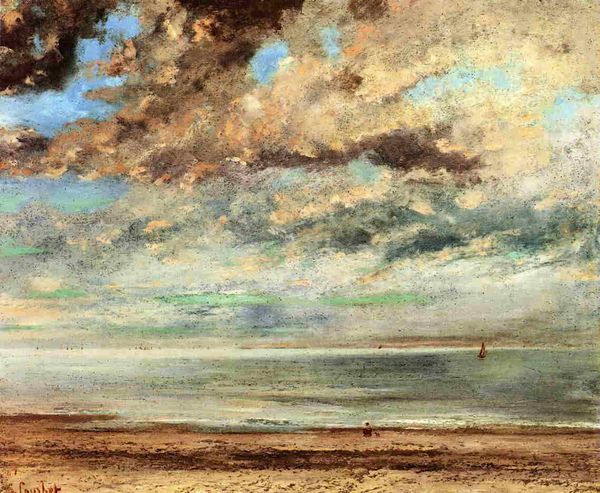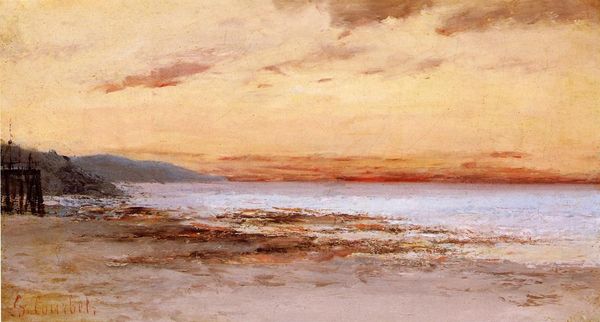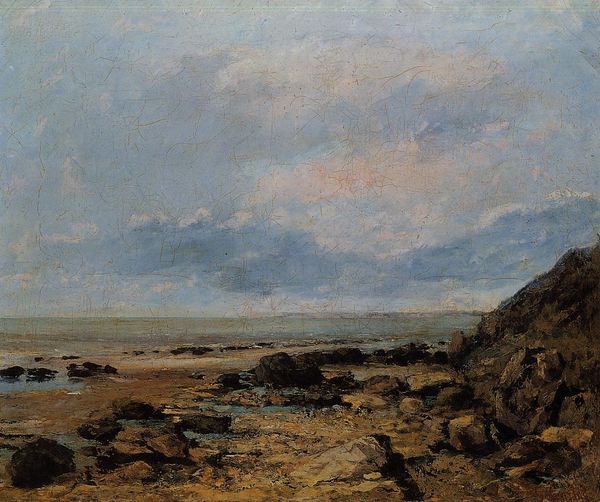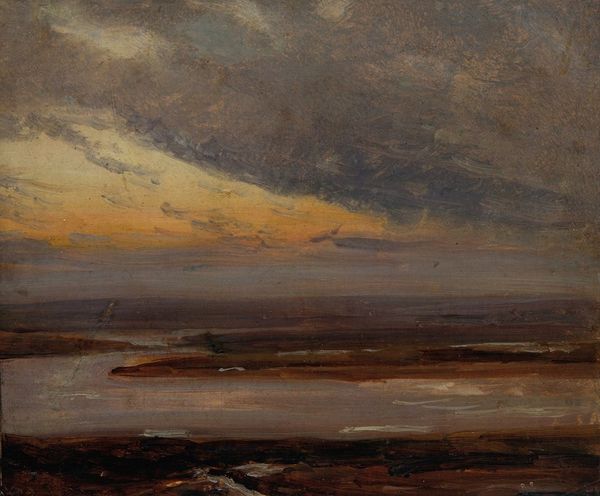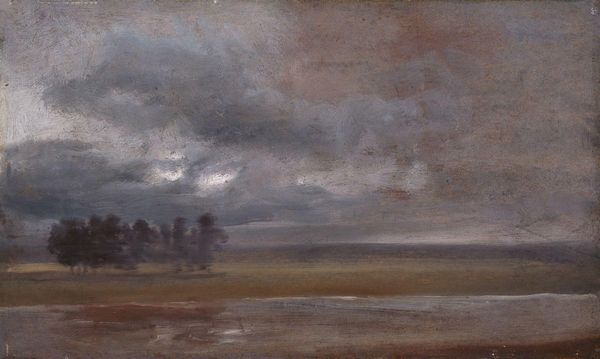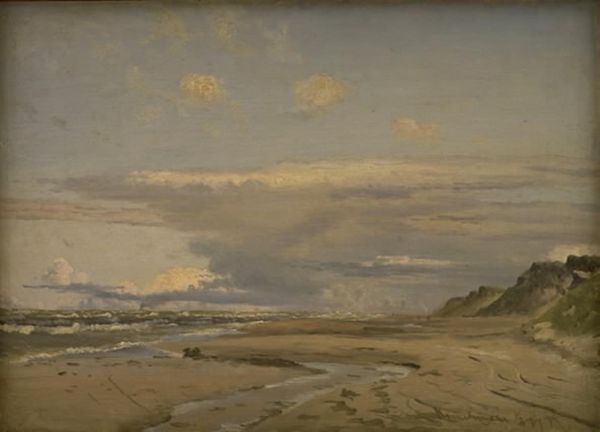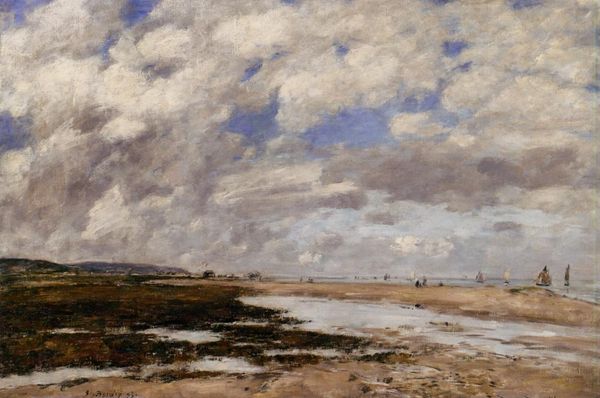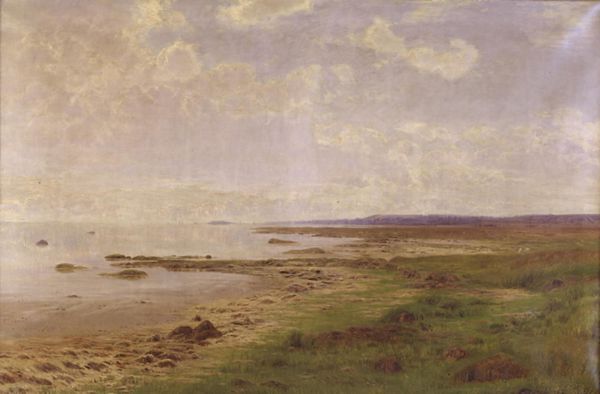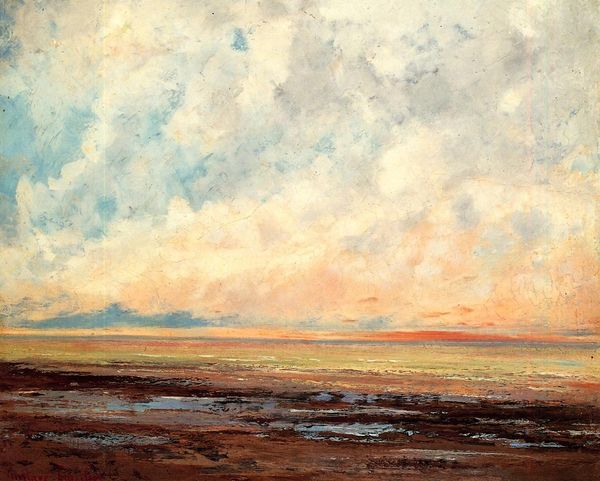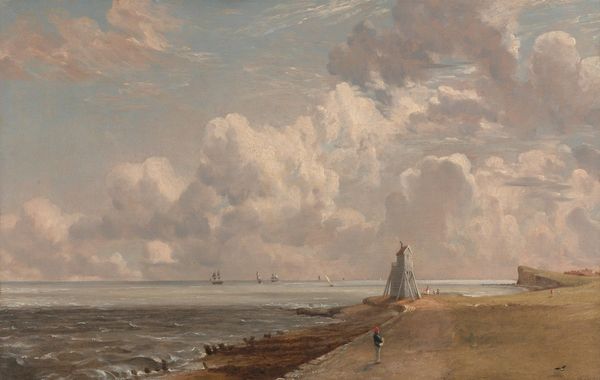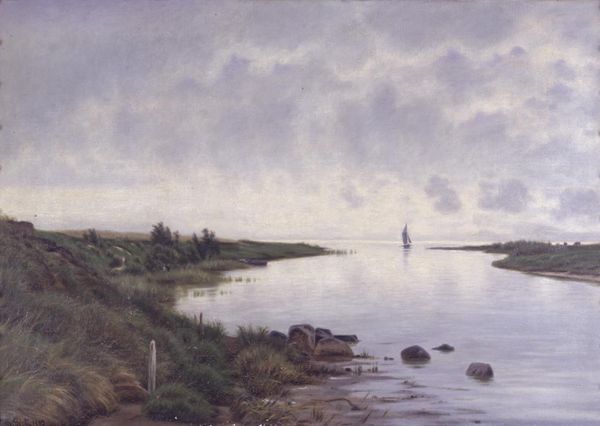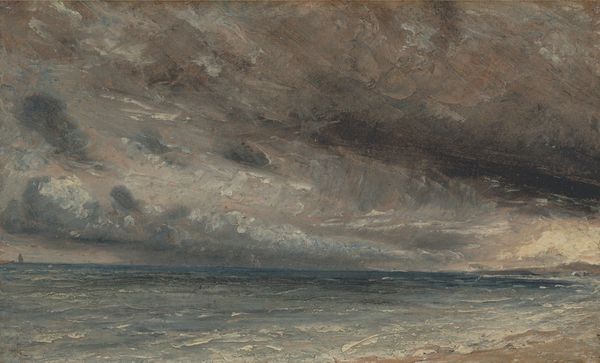
painting, plein-air, oil-paint
#
sky
#
painting
#
impressionism
#
plein-air
#
oil-paint
#
landscape
#
impressionist landscape
#
oil painting
#
ocean
#
cityscape
#
realism
#
sea
Copyright: Public domain
Editor: So, this is Courbet's "The Beach at Trouville at Low Tide," painted in 1865. It’s primarily earth tones, the sky seems heavy, but what really grabs me is how much of the painting is devoted to the sky, like, two-thirds of the composition. What do you see here? Curator: Well, I see Courbet's focus on the tangible realities of artistic production. Look at the brushstrokes, the way the oil paint is layered. It’s about the physicality of making art, not just representing a scene. Notice how the 'scene' isn't really idealized. How might the materials available to him have dictated the color palette and the texture we observe? Editor: I hadn’t thought about it that way. It feels like a quick sketch done on the spot, a kind of capturing of a fleeting moment in time. Does that affect your idea about his use of the material? Curator: Precisely. Consider that he painted this en plein air. The portability of his materials—the oil paints in tubes, the canvas—enabled him to directly engage with the environment. This was a radical shift. This way of painting democratized the process. Instead of only wealthy elites in studios engaging with landscape painting, everyday people with readily accessible supplies and instructions in magazines could now capture what they found to be beautiful. Editor: I see, so it's about the shift in access and who gets to represent nature, which itself has economic implications. Curator: Exactly! And it subtly challenges the hierarchy that placed grand history painting above simple landscapes. The material conditions—availability, cost, and portability—really reshaped the art world and society itself. Editor: That’s a completely different way of seeing it. I appreciate thinking about the role of the materials themselves, and how their accessibility transformed the very idea of making art. Curator: Right. By examining the materiality and means of production, we uncover social and economic shifts reflected in the artwork itself.
Comments
No comments
Be the first to comment and join the conversation on the ultimate creative platform.
